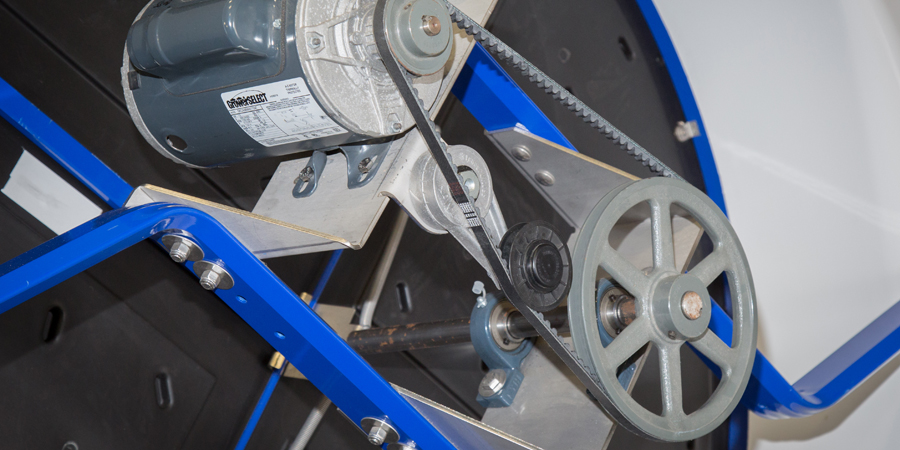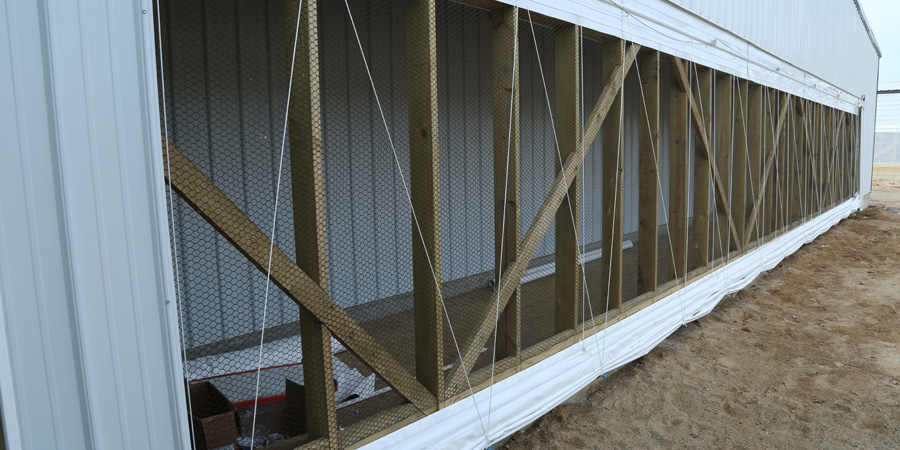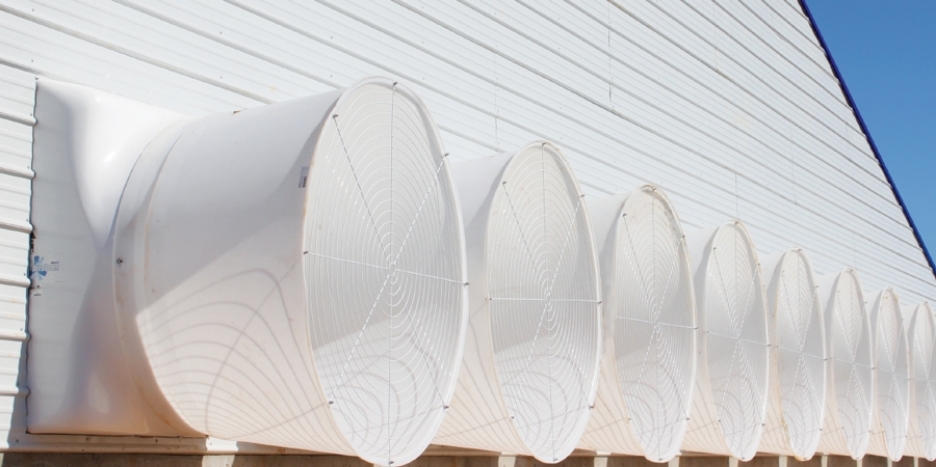By Austin Baker, Ventilation director, Hog Slat Inc.
I am frequently asked by farm owners to evaluate the tunnel ventilation system on an existing facility that they feel is "not performing to par." I have a simple checklist that I follow to troubleshoot these systems.
I start with the fans. Think of fans as air pumps. Exhausting air from the building is the primary method of removing heat. If you don't have enough pumping power heat will build up inside the facility.
I run a quick calculation of the required cubic feet per minute or cfm to check to see if the existing fans are adequate. Honestly most of the time the installed fan capacity is enough to do the job. We need to dig deeper to find out why the fans are performing up to their potential.
1) Are the shutters dirty? A dirty shutter can rob up to 8% of the cfm delivery as it takes extra energy to keep the vanes open. Keeping a broom at the fan end of the barn will pay for itself.

2) Are the belts worn? The pulley transfers motor energy to the prop. If it is slipping, the prop will not turn at its full revolutions per minute and reduced airflow results Annual belt replacement is part of a good maintenance program.
3) Are the belts the correct length? (See an article on measuring belt length)
4) Is the belt tension correct? Check for a stuck belt auto tensioner.
5) Are the pulleys worn? This is one of the more common culprits. Worn pulleys cause slippage and result in belts wearing faster.
6) Is there any "wiggle" in the shaft bearings? Bearings should be firm and tight, as unnecessary vibration will cause the entire linkage system to wear quicker.
7) Are the bearings running hot? The heat caused by friction means they need grease or replacement.
8) Are the prop tension screws tight? Not a common issue but it happens.
9) Are any sections of the fan cone missing? Cones increase fan output by 10%.
Once I am comfortable the fans are operating at their full capacity, I next turn to the air intake, which is most commonly a tunnel curtain. A quick calculation of the total fan capacity in cfm divided by 400 will give the required opening for the system. Typically the system was designed with enough opening but is somehow being restricted. Here are some things to watch for.

1) Curtains that bunch up and block the bottom quarter or third of the opening. Curtains should be attached far enough below the inlet to allow them to gather at the bottom without restricting the opening.
2) Curtain rods are catching on the curtain pockets and not allowing them to come down.
3) Not enough weight in the curtain rods to allow the curtain to open fully.
The next area to look at is the cool cell system. As warmer air passes through the pads, the water is evaporated to cool the air moving into the building. As this water evaporates, it leaves behind whatever minerals, algae or dirt it contained. These deposits build up on the pads as scale limiting airflow.

While there are several effective chemical products to reduce scale buildup, one of the most impactful ways to reduce scale is to drain the trough entirely and fill with fresh water once a week during hot weather. This blast of clean water helps flush scale from the pads. (See more at Cool cell maintenance | an engineer’s view)
More often than not, some basic maintenance and repairs are all that's needed to get an existing tunnel running at its full potential.












 Україна
Україна Méjico
Méjico



